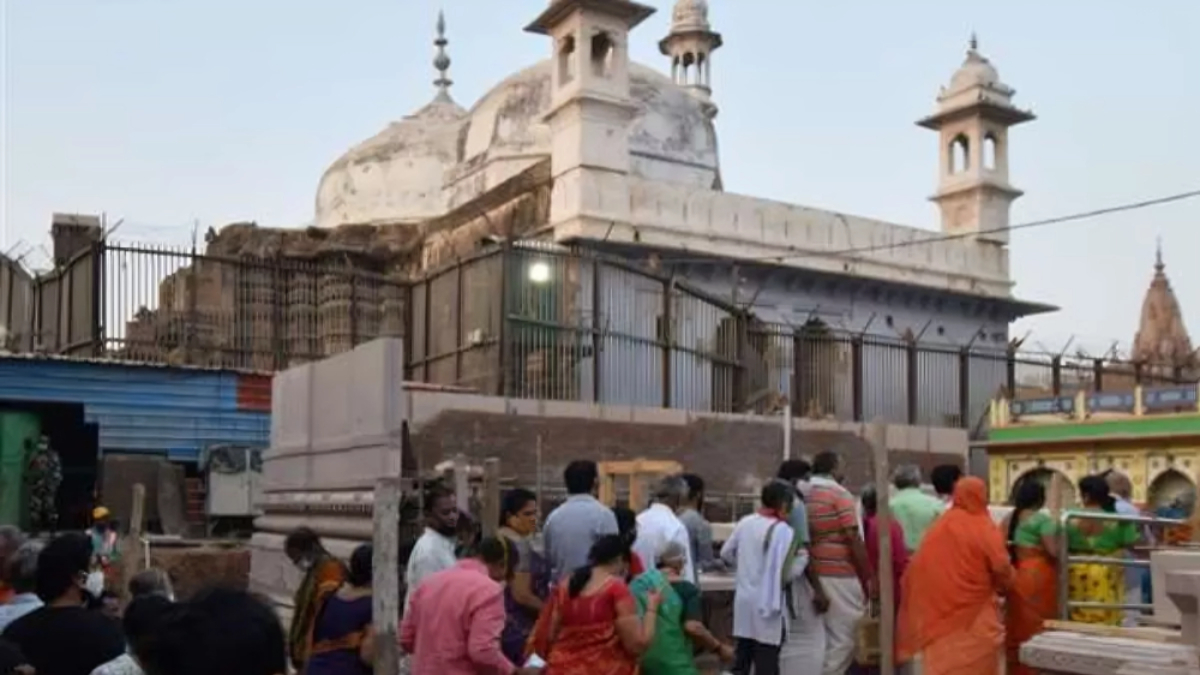The Gyanvapi ASI has provided clarification that a significant Hindu temple existed at the site before the construction of the mosque. The comprehensive 839-page survey report contains numerous details, including the revelation from the GPR survey that sheds light on the ancient origins of the Hindu temple. During the excavation, a substantial floor was unearthed six meters beneath the temple; however, the composition of the material used for its construction remains unknown.
Ashok Kumar Singh, who is an archaeologist and a professor in the Ancient History Department at BHU, reported that a year and a half ago, a Shivlinga was discovered buried underground in the village of Babhaniyaon in Banaras. Singh suggests that if the excavation methods used in the village are applied to Gyanvapi as well, it may reveal the authentic history of the temple hidden beneath its basement.
History of the temple
During the excavation in the village, a trench was dug and revealed artifacts dating back five hundred years. Subsequently, as the excavation progressed, ancient objects from one thousand, fifteen hundred, and two thousand years ago were discovered. These findings included items of religious significance such as materials used for worship, temple walls, and circumambulation paths. Interestingly, the deeper the excavation went, the more the history of the temple seemed to evolve.
History of the temple under the basement in Gyanvapi
The further we delve into the issue of Gyanvapi, the more mysterious things will emerge about Jyotirlinga Adivishveshwar. Pro. Ashoka says that the history of the temple under the basement in Gyanvapi can be known through excavation. Ground penetrating radar survey in ASI survey is also indicating the same. There is a large floor below the basement of the temple. A similar shape was seen three meters below it.
History of the temple Gupta period
The temple below Gyanvapi comprises of two ancient levels. Additionally, there exists a basement and a well, which have remained unexplored till present times. Based on the GPR survey, the temple’s origins can be traced back to the Gupta period. Upon surveying the northern hall, a noticeable cavity is observed in the floor beneath. The floor is covered with a substantial amount of mortar, indicating the presence of a solid structure. Beneath this layer lies a rectangular area, partially accessible. The door of this space opens in the southern direction.
Archaeological Evidence
Going down the southern corridor of the temple, one can descend approximately 4-6 meters. On the other hand, the northern corridor exhibits a similar structure but is situated three meters lower than the basement level. It is fascinating to observe how each meter of depth in archaeological findings signifies a shift in the entire century. Consequently, as we delve deeper, we journey further back in time.
A survey is uncovering the hidden secrets of the ancient Hindu temple
The Archaeological Survey of India (ASI) has provided clarification regarding the presence of a significant Hindu temple preceding the construction of the mosque at this site. The comprehensive survey report, spanning 839 pages, contains numerous details, including the revelation of the temple’s ancient origins through Ground Penetrating Radar (GPR) survey. During the excavation, a substantial floor was unearthed, located six meters beneath the temple. However, the composition of this floor material remains unknown. Furthermore, the precise dynasty and year of its construction are yet to be determined.

